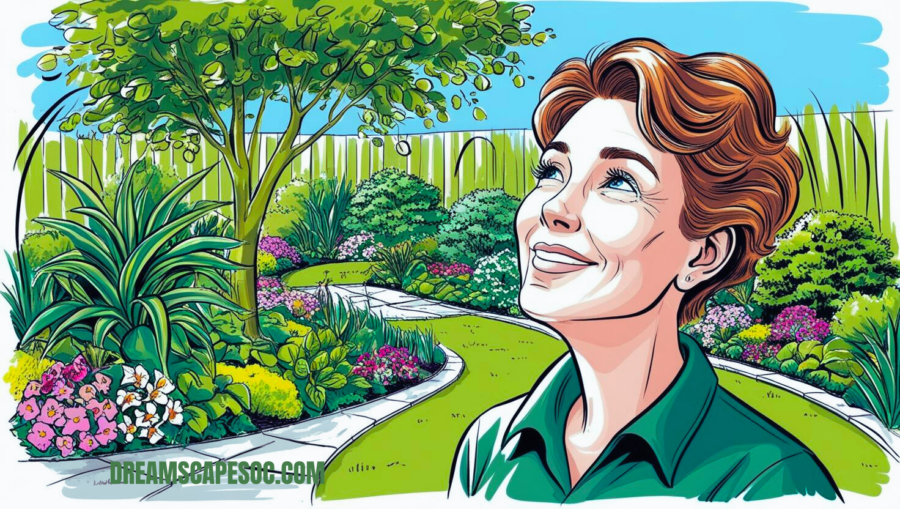What Are Native Wildflowers?
Native wildflowers are plants that have naturally grown in specific regions for centuries, adapting to the local environment, climate, and soil. Unlike exotic plants that people have introduced from other places, native wildflowers belong in their habitat, where they’re perfectly suited to support local wildlife. When you think about native wildflowers, you’re likely picturing familiar species like Black-Eyed Susans with their bright yellow blooms, Purple Coneflowers, or the hardy California Poppies. Native Wildflowers add a burst of color to landscapes and play a vital role in maintaining healthy ecosystems.
Each area has its own selection of native wildflowers that thrive best within that environment. We’re improving our environment and maintaining the natural balance of the ecosystem by employing these native wildflowers.
- Supporting Local Wildlife: Native wildflowers are amazing for local wildlife. These flowers provide food, shelter, and habitat for all sorts of creatures—think of bees buzzing around for nectar, butterflies stopping by for pollen, and even birds munching on the seeds. As many of these pollinators face challenges like habitat loss and population decline, a garden full of native wildflowers can become a safe haven and valuable food source, helping keep local biodiversity alive and well.
- Low Maintenance and Resilience: One of the best things about native wildflowers is that they practically take care of themselves. They need less care than non-native plants since they have adapted to their particular environment. Concerns about insect control, fertilization, and watering will decrease. These plants are ideal for gardeners who want a beautiful, low-maintenance landscape because they are naturally more resilient. Plus, they don’t just survive—they thrive, and that means less work and fewer chemicals in the soil.
- Making the Soil Healthier For both terrestrial and subterranean creatures, native wildflowers are beneficial. They improve water penetration, lessen erosion, and conserve the soil thanks to their deep roots. The growth and dissemination of these roots produce a strong soil structure that stabilizes slopes and inhibits flow. Native wildflowers protect your garden’s foundation while also giving soil bacteria a healthy home, which encourages stronger plants. In addition to protecting the foundation of your garden, native wildflowers give soil bacteria a healthy home, which encourages the growth of more robust plants. Native wildflowers preserve the basis of your garden and also provide a healthy environment for soil microbes, which promotes stronger plants. Native wildflowers help keep the soil microbes happy, which promotes stronger plants and maintains the basis of your garden. Healthy soil means healthier plants, and by keeping soil microorganisms happy, native wildflowers keep your garden’s foundation strong.
- Boosting Biodiversity: A garden filled with native wildflowers is like a welcome mat for all kinds of beneficial insects and animals. It encourages a balanced ecosystem where each species has a role to play—whether it’s pollinating, decomposing, or keeping pest populations in check. This natural biodiversity is key to resilient ecosystems, which are better equipped to handle changes in the environment, from extreme weather to disease
Elevate Your Outdoor Space—Explore Exclusive Landscaping Concepts
Popular Native Wildflowers by Region
- Midwest: Black-Eyed Susans and Purple Coneflowers are common in the Midwest, drawing in bees and butterflies. Purple Coneflowers are especially popular for their long blooming season and drought tolerance.
- Southeast: The Southeast is home to Bee Balm, with spiky red blooms that attract hummingbirds and bees, and Cardinal Flowers, which do well in shaded, damp areas.
- Southwest: Southwest gardeners often choose Desert Marigold, which needs minimal water, and Mexican Hat flowers, recognizable by their cone-shaped centers, ideal for drought-tolerant gardens.
Whether you’re in the Northeast, West Coast, or any other region, there’s a native wildflower suited to your local climate. Local plant societies or nurseries can help you pick the best options for your area.
| Flower Name | Region | Blooming Season | Benefits for Wildlife |
| Black-Eyed Susan | Midwest | Summer to Fall | Attracts bees and butterflies |
| Purple Coneflower | Midwest | Summer to Fall | Loved by pollinators, drought-tolerant |
| Bee Balm | Southeast | Mid to Late Summer | Hummingbird favorite, attracts bees |
| Cardinal Flower | Southeast | Late Summer | Provides nectar for hummingbirds |
| Desert Marigold | Southwest | Spring to Fall | Thrives in dry climates, draws insects |
| Mexican Hat | Southwest | Summer | Unique shape, great for low-water areas |
| California Poppy | West Coast | Spring | Low water needs, attracts pollinators |
| Bluebonnet | Texas and Southwest | Spring | Supports bees, beautiful spring blooms |
Key Takeaway: Adding native wildflowers to your garden isn’t just about adding color; it’s about creating a mini-ecosystem that supports wildlife, promotes biodiversity, and makes your garden easier to care for.
Transform Your Outdoor Space Today – Download Your Free Landscaping and Gardening Checklist

How to Grow and Care for Native Wildflowers
- Choosing the Right Species: When starting out, select species that suit your area’s climate, soil, and light conditions. Native wildflowers are adaptable, but picking plants specific to your region will yield the best results. Many local nurseries or plant societies can help guide you on the best native wildflower species for your location. You can also look for native wildflower seed mixes catered to specific regions.
- Planting Tips: Prepare the soil by clearing weeds and loosening it before planting. Follow spacing recommendations as some wildflowers spread and fill out over time. Water regularly until they’re established. A little effort at the start can make a big difference in how well your native wildflowers take root.
- Seasonal Care: Native wildflowers need different care depending on the season. In spring, thin out overcrowded areas to give each plant enough room to grow. During the summer, established wildflowers generally only need occasional watering. In fall, it’s a great time to sow seeds for the next season so that new wildflowers get a head start when spring comes around.
Designing Your Native Wildflower Garden
- Mix Colors and Bloom Times: To keep your garden visually appealing, choose wildflowers that bloom at different times so you always have something in bloom. Mixing complementary colors creates a beautiful effect. For instance, purple coneflowers paired with yellow coreopsis create a striking contrast that’s sure to turn heads.
- Play with Height and Texture: A garden with wildflowers of varying heights adds depth and interest. Taller varieties like Joe-Pye weed add a touch of drama, while shorter plants like violets cover the ground and create a lush carpet. Mixing heights and textures gives your garden a layered look that feels rich and natural.
- Provide Native Grasses for Variability: To provide even more texture and visual contrast, pair native wildflowers with grasses like switchgrass or little bluestem. Grasses create a balanced appearance that is reassuring and welcoming by stabilizing the soil and offering a gentle background for wildflowers to shine.
Final thoughts
Native wildflowers are an excellent way to help the environment and beautify your yard. These low-maintenance plants need little water, fertilizer, or focus, yet they create a beautiful backdrop. Picking native plants for your property can benefit biodiversity, animals, and soil health. Regardless of the size of your garden, native wildflowers can turn your space into a peaceful retreat for both you and the environment.
Dive into related articles now for even sharper insights—you won’t regret it!
Native Plant Gardening Tips: A Guide for Sustainable Landscapes
FAQs
Can native wildflowers be grown in containers?
Absolutely, you can grow many native wildflowers in containers. Just ensure the pot has enough space for roots and proper drainage.
How quickly do native wildflowers bloom?
It depends on the species, but some native wildflowers bloom in their first growing season, while others may take a year to establish.
Do native wildflowers attract pests?
Native wildflowers are generally pest-resistant, though some insects may visit. These are typically beneficial or harmless to the plant’s health.
Can native wildflowers grow in different soil types?
Yes, but it’s best to select species suited to your specific soil type. Some thrive in sandy, well-drained soil, while others prefer clay or loam.
Are native wildflowers perennial or annual?
They can be either. Some native wildflowers are perennials that come back each year, while others are annuals that reseed naturally.

